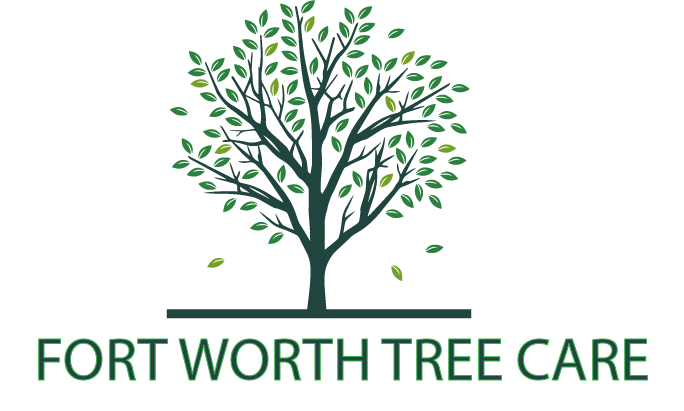Oak Wilt Identification
Oak Wilt Identification in Fort Worth
Oak Wilt Identification - Tree Disease

Red Oak Trees Oak wilt might be a serious problem in your oak trees. Wilting of leaf tips can occur in red oak trees. This will cause brown chlorosis and eventually wilting backward to the veins. We offer a free consultation if you have Oak Wilt on your tree in Fort Worth.
You may notice it on many leaves or branches. This could lead to one or more trees’ canopy becoming brown. Your red oak trees may wilt for other reasons, including bacterial leaf scorch another name (BLS), and the infestation of borer beetles. It is important to have an oak wilt lab test performed by Texas A&M.
LIVE Oak – Oak Wilt IdentificationFirst step is to find oak Wilt. We can help!
Live Oaks can be easier to identify when oak wilt occurs. You can see the obvious vein part of the leaf turning dark brown.
This condition, veinal neurosis is also known, and is very easy to identify. To diagnose oak Wilt disease, it is highly recommended you contact an Fort Worth Arborist. Oak Wilt Disease can be confirmed through a laboratory test.
How does Oak Wilt Spread
Oak wilt is almost always caused by oaks. Oak wilt disease can affect any species of red oak. As fungal spores grow beneath the bark system, the sap eating beetles (Nitidulid Beetles), may become contaminated. They will then fly to other healthy trees. This is one of many reasons why Live Oak and red oak trees contract tree disease.
Oak Wilt Pathogen causes nearly all red oaks to die. The pathogen can also pass through the root systems of red oaks. Because trees live in a cluster, they will spread it to their neighbors. Live Oaks may also transmit the disease through their root systems, since they are usually found in large groups.
Oak Wilt Prevention
We will show you how to combat Oak Wilt Spread. The other way to combat this aggressive pathogen is to REMOVE the infected plant, even if it fails.
For healthy trees, you will need to create an aggressive root barrier. You must trench at least 4 ft. It is important not to crush the root flare, but rather grind it until you reach dirt below.
Also, remove any grained wood mass or shavings. It is critical that you not keep any firewood originating from infected oak disease trees in Fort Worth. Last but not the least, make sure to get rid of all infected foliage from your property.
Remember that leaves can carry the disease so that you don’t have to mow the lawn. This will cause the leaves to turn into compost which will then lead to the disease spreading to other trees.
Call us today to schedule a free consultation with an Arborist Certified.
Oak Wilt Treatment. Keep Your Tree Healthy and Safe!
It is essential to treat healthy trees if there are no signs of oak wilt. Oak Wilt has been prevented by several different fungicides.
How to treat Oak Wilt
Oak Wilt can be treated in the traditional way by exposing its root flare and injecting it with Alamo Propiconazole fungicide into the trunk. To maintain the health and longevity of your red and live oak trees, it may be necessary to re-treat them the following season.
Systemic deep roots fertilization is another option that’s highly recommended. This allows your trees to remain strong and healthy and can help combat Oak Wilt and insects.
Call us today to get sick tree help in Fort Worth TX
Diagnostics on Chlorosis
The arbor care professional will affirm findings dependent on examination of the tree’s leaves and actual appearance, as iron chlorosis initially manifests on newer leaves however in further developed phases of chlorosis may lead to browning of leaf tips, untimely foliage loss and discoloration spreading older grown ones. Soil will be tested in the laboratory by the experienced plant pathologist to determine the alkaline level and the available nutrients inside the soil for the tree.
The living space grounds will be studied closely by the experienced tree company for areas where soil compaction from construction exercises and improper drainage system may cause poo root development. Wounds to the tree’s root system from shovels or other yard care exercises may likewise add to the advancement of chlorosis. A conclusion report will be given by the certified arborist upon complete affirmation of chlorosis and the best arborist in Fort Worth will customize the fundamental specific treatment and consistent support plan needed to dispose of chlorosis from the tree and the outside ecological grounds.
Treating Chlorosis
Deterrent measures are consistently the most ideal approach to control chlorosis. The tree service professional will lead and help you in choosing tree varieties that have a higher protection from chlorosis for regions where soil has a higher basic substance. For trees that are seriously influenced by chlorosis, it could be important to eliminate them and supplant them with safer trees. Keeping up the wellbeing and imperativeness of the tree by securing the tree’s root system is fundamental, and customary profound root preparation as booked and coordinated by an experienced tree company guarantees the roots will stay healthy. Routinely planned watering and soil soaking during drought-like conditions will assist with mitigating pressure to the tree. Moreover, natural mulch around the tree’s base guarantees appropriate waste and will enable the tree to fight different infirmities from extraordinary temperatures as is regular with Texas summer climate.
When chlorosis is determined to be because of iron insufficiency, applying iron by means of trunk infusions by a certified arborist who gives a one-year guarantee on any treatment delivers immediate outcomes. Foliar showering will rapidly reestablish the green tone to the leaves, however it requires various applications and must be booked and coordinated by an arborist that treats sick trees. To guarantee that the residential outdoor living environment will remain green and lush, it is important to entrust valuable trees to the care of the best arborist in Fort Wort

- Tree Pruning
- Tree Cutting & Shaping
- Tree Limb Removal
- Tree Cabling & Bracing
- Full Tree Removal
- Stump Grinding in Fort Worth
- Stump Removal in Fort Worth
- Emergency 24/7 Tree Service
- Deep Root Injections
- Tree Planting
- Tree Fertilization
- Sick Tree Help
- Soil Aeration
Call for a Tree Health Inspection!
Typical tree diseases in Texas:
- Oak Wilt
- Chlorosis
- Hypoxylon Canker
- Brown Rot
- Fire Blight
- Tip Blight
- Post Oak Decline
- Leaf Spot Decline
- Phytophthora ramorum
- Tip Blight
- Root Rot
- Sudden Oak Death
- Bacterial Leaf Scorch
- Pine Gall Rust
Call today for help with diagnosing your sick trees Fort Worth.
